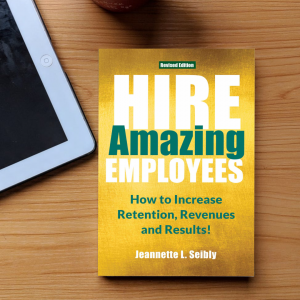
Many GenXers and Millennials who have been job hoppers are now looking for an employer for “life.” As an employer and as a ‘job loyalist,’ it’s important to become aware of the costs and benefits of job longevity.
Many GenX and Millennial leaders who have spent their careers job hopping every 3 to 5 years are now seeking to find a home or in other words become a ‘job loyalist.’ A job loyalist is intending to stay, contribute, and construct a legacy with a purposeful role. This shift resembles a trend of job hugging; however, job huggers typically plan to pursue new opportunities once economic or external conditions improve.
Job loyalists aim to find one final employer where they can stay and retire—ideally for 10 to 20 years – from job hopping to job holding. Often, this decision is influenced by family needs, health considerations, or personal life pursuits.
Yet both employers and job loyalists frequently overlook a critical reality: those who crave new and exciting work often possess traits such as independence, unconventional thinking, and a need for new challenges – otherwise they become bored. Also, these same traits can mask leadership blind spots that undermine long-term success and the ability to stay with one employer for a long period of time without developing deeper leadership skills.
In today’s fast-paced environment, companies and leaders must balance experience with fresh perspectives, strategic risk-taking, and cultural adaptability to remain competitive. While job loyalist with deep industry knowledge can provide these insights, companies must ask: Can this job loyalist continue to grow without compromising innovation, agility, or strategic clarity?
Costs of Job Loyalists
Being aware of the following pitfalls can help avoid hiring a job loyalist looking for an interim safe place to land.
- Risk Aversion and Complacency. Long tenure can foster comfort over courage. Leaders who once embraced bold change may now avoid disruptive innovation to protect their position.
- Stagnation in Decision-Making. Without fresh perspectives, strategic choices may default to legacy thinking rather than future readiness. Leaders may prioritize being liked over being effective.
- Reduced Agility. Lifelong roles can slow organizational pivoting. Reassigning or reimagining roles becomes difficult when longevity is the job loyalist’s goal. Top talent, your future leaders, will exit if this occurs.
- Saboteur of Evolution. Job loyalists may resist cultural evolution, especially in areas like DEI, tech adoption, or emerging leadership styles. “We’ve always done it this way” becomes a silent saboteur.
- Complacency on the Job. Remaining in the same company and similar roles may feel comforting to the job loyalist, but it can quietly erode the agility, innovation, digital literacy, and growth every company needs to thrive.
- Former job hoppers—now aspiring job loyalists—once thrived on frequent raises, new titles, and fresh challenges. When promises made by new employers are forgotten, ego and lack of trust may prompt them to start job hopping again.
The Benefits of Keeping Job Loyalists and Future Leaders Engaged
Remember, use a strategic job fit selection system including qualified job fit tools to ensure the quality of hiring (including Boomerangs (rehires)), coaching, and managing.
Create Career Pathways and Career Ladders. Talent bottlenecks can be caused by job loyalists. Provide new career pathways and ladders to prevent career blocks for emerging talent and keep current leaders agile. For example: Rather than relying solely on the traditional career ladder, transition executives into board roles or company-affiliated foundations. This opens up new responsibilities and creates opportunities for rising leaders.
Update Current Workplace Culture. Ensure your workforce prioritizes purpose, flexibility, resilience, idea generation, and growth over permanence. Without this shift, attracting top talent becomes increasingly difficult.
Keep Skills Current. Long-tenured employees may avoid reskilling or adapting to changes in technology, human development, finance, and operations. Job loyalists often prioritize personal comfort over company-wide changes, leading to mismatches between role demands and stakeholder expectations. Make skill adaptation and accountability non-negotiable across the company.
Keep Succession Planning Current. Sudden exits can create leadership vacuums and operational disruption. Never assume someone will always remain in a role—or that the #2 person is ready.
One individual served as the #2 for over a decade. When promoted to #1 after his boss retired, he lacked decision-making and critical thinking experience at the enterprise level. He was fired six months later by the board of directors. As an independent consultant, his lack of tech and leadership skills led to closing his consulting business within a year.
Reframe From Keeping a Lifelong Job to Being a Lifelong Contributor. Instead of anchoring leaders to longevity, companies can:
- Promote lifelong learning and legacy-building by requiring ongoing management development through symposiums or conferences (e.g., encourage leaders to share ideas and facilitate breakout workshops that activate strategic thinking and peer engagement).
- Encourage role evolution through horizontal or vertical job expansion to meet new business demands (e.g., lead AI initiatives, spearhead wellness programs, drive goal completion, and transform employee development).
- Design contribution pathways that honor experience without stifling innovation (e.g., mentoring, college and trade school presentations, onboarding support). Ensure the job loyalists have developed engaging and talent-attracting presentations by requiring public speaking training (this applies to all presenters).
©Jeannette Seibly 2025 All Rights Reserved
 Jeannette Seibly, an award-winning Talent Advisor, Leadership Results Coach, and Business Author, has guided thousands of executives and business leaders to achieve remarkable success over the past 33 years. Her specialty is delivering innovative solutions for hiring, coaching, and leadership challenges—with excellence and accountability at the core.
Jeannette Seibly, an award-winning Talent Advisor, Leadership Results Coach, and Business Author, has guided thousands of executives and business leaders to achieve remarkable success over the past 33 years. Her specialty is delivering innovative solutions for hiring, coaching, and leadership challenges—with excellence and accountability at the core.
 Remember, use a strategic job fit selection system including qualified job fit tools to ensure the quality of hiring (including Boomerangs (rehires)), coaching, and managing.
Remember, use a strategic job fit selection system including qualified job fit tools to ensure the quality of hiring (including Boomerangs (rehires)), coaching, and managing.
